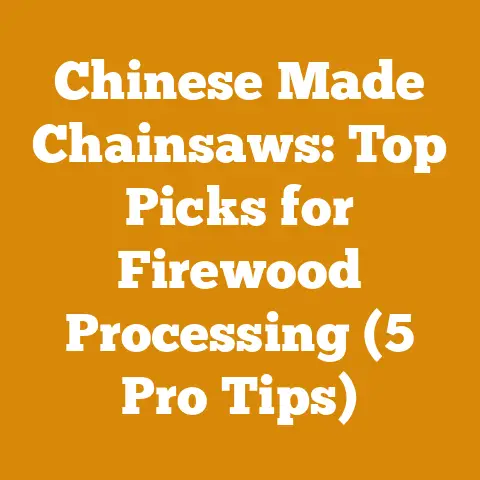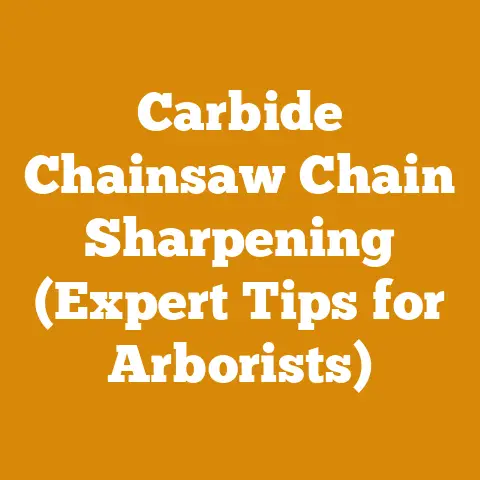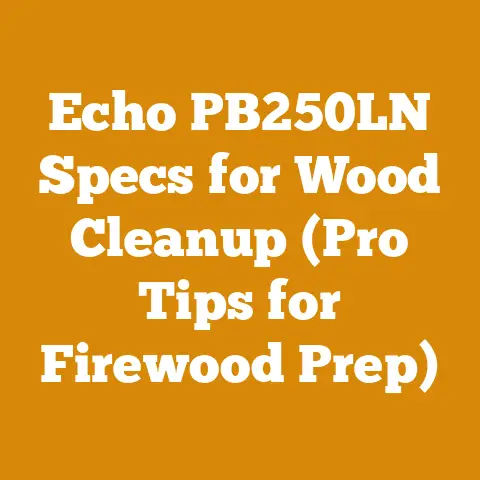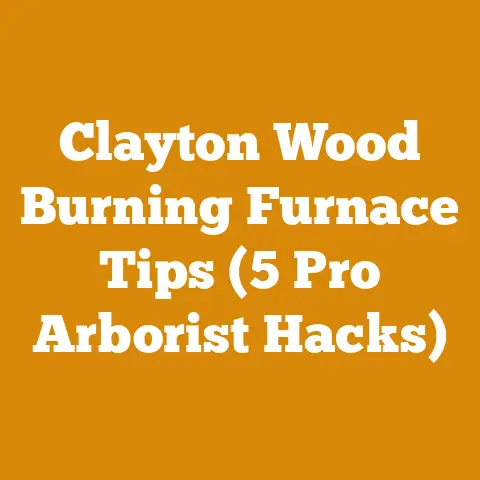Chemjet Tree Injectors for EAB Control (Pro Arborist Insights)
Understanding the Emerald Ash Borer Threat
The Emerald Ash Borer (Agrilus planipennis) is an invasive beetle native to Asia that has wreaked havoc on ash trees (Fraxinus spp.) across North America and parts of Europe.
The larvae of this beetle bore into the bark and feed on the phloem and cambium layers, disrupting the tree’s ability to transport water and nutrients.
This ultimately leads to the tree’s death, often within a few years of infestation.
The Scale of the Problem
The numbers are staggering.
Since its discovery in Michigan in 2002, EAB has spread to over 35 states and several Canadian provinces, killing hundreds of millions of ash trees.
According to the USDA, the economic impact of EAB in the United States alone is estimated to be in the billions of dollars.
The loss of ash trees not only affects the aesthetics of our landscapes but also has significant ecological consequences, impacting wildlife habitats and forest ecosystems.
Recognizing EAB Infestation
Early detection is critical in managing EAB infestations. Some telltale signs include:
- D-shaped exit holes: These are small, approximately 1/8-inch wide, and are a distinctive indicator of EAB emergence.
- Thinning canopy: The upper crown of the tree may start to thin as branches die back due to disrupted nutrient flow.
- Epicormic shoots: These are new shoots that sprout from the trunk or branches, indicating stress on the tree.
- Bark splitting: Vertical splits in the bark may reveal S-shaped galleries created by the larvae.
- Increased woodpecker activity: Woodpeckers often feed on EAB larvae, leading to increased activity on infested trees.
Why Traditional Methods Fall Short
While various methods exist for controlling EAB, such as soil drenching and trunk spraying, they often have limitations.
Soil drenching can be less effective in certain soil types or when trees are under stress.
Trunk spraying may not reach the upper canopy, leaving parts of the tree vulnerable.
Moreover, these methods can have broader environmental impacts, affecting non-target insects and potentially contaminating soil and water.
Chemjet Tree Injectors: A Targeted Approach
Chemjet Tree Injectors offer a targeted and efficient method for delivering insecticides directly into the tree’s vascular system.
This approach minimizes environmental impact and ensures that the insecticide reaches the areas where EAB larvae are feeding.
How Chemjet Tree Injectors Work
Chemjet Tree Injectors are small, self-contained devices that are inserted into the tree’s trunk.
They contain a pre-measured dose of insecticide, which is gradually absorbed into the tree’s vascular system.
The insecticide then translocates throughout the tree, providing protection against EAB larvae.
Mechanism of Action:
- Drilling: A small hole is drilled into the tree’s trunk, typically at the base.
- Insertion: The Chemjet injector is inserted into the drilled hole.
- Pressurization: The injector is pressurized, either manually or with a small pump.
- Injection: The insecticide is slowly injected into the tree’s vascular system over a period of several minutes to hours.
- Absorption: The tree absorbs the insecticide, which is then distributed throughout the canopy.
Advantages of Using Chemjet Tree Injectors
- Targeted Delivery: The insecticide is delivered directly to the tree’s vascular system, minimizing exposure to non-target organisms.
- Reduced Environmental Impact: Compared to spraying or soil drenching, Chemjet injectors use significantly less insecticide and reduce the risk of runoff or drift.
- Effective Control: When used correctly, Chemjet injectors can provide effective control of EAB larvae, protecting trees for up to two years.
- Ease of Use: Chemjet injectors are relatively easy to use, requiring minimal training and equipment.
- Preservation of Mature Trees: This method can be particularly effective in preserving mature, high-value ash trees that might otherwise be lost to EAB.
Disadvantages of Using Chemjet Tree Injectors
- Labor-Intensive: Injecting multiple trees can be time-consuming and labor-intensive.
- Potential for Tree Damage: Improper drilling or injection techniques can damage the tree’s vascular system.
- Cost: Chemjet injectors and insecticides can be more expensive than other treatment options.
- Limited Application Window: The effectiveness of Chemjet injectors depends on the tree’s ability to absorb the insecticide, which may be limited during periods of drought or dormancy.
Choosing the Right Insecticide
Selecting the appropriate insecticide is crucial for effective EAB control.
The two most commonly used insecticides for tree injection are emamectin benzoate and azadirachtin.
Emamectin Benzoate
Emamectin benzoate is a systemic insecticide that is highly effective against EAB larvae.
It works by disrupting the insect’s nervous system, leading to paralysis and death.
Key Features:
- Long-lasting Protection: Emamectin benzoate can provide protection for up to two years.
- Systemic Action: It is readily absorbed and translocated throughout the tree, reaching even the farthest branches.
- High Efficacy: Studies have shown that emamectin benzoate can significantly reduce EAB larval populations and protect trees from damage.
Application Considerations:
- Timing: Apply emamectin benzoate in the spring or early summer, when the tree is actively growing and can readily absorb the insecticide.
- Dosage: Follow the manufacturer’s instructions for dosage based on the tree’s diameter at breast height (DBH).
- Environmental Conditions: Avoid application during periods of drought or extreme heat, as this can reduce the tree’s ability to absorb the insecticide.
Azadirachtin
Azadirachtin is a natural insecticide derived from the neem tree.
It works by disrupting the insect’s growth and development, preventing them from molting and reproducing.
Key Features:
- Environmentally Friendly: Azadirachtin is biodegradable and has a lower toxicity to non-target organisms compared to synthetic insecticides.
- Systemic and Contact Action: It can be absorbed by the tree and also acts as a contact insecticide on EAB larvae.
- Growth Regulator: Azadirachtin interferes with the insect’s hormonal balance, preventing it from completing its life cycle.
Application Considerations:
- Timing: Apply azadirachtin in the spring or early summer, when EAB larvae are actively feeding.
- Dosage: Follow the manufacturer’s instructions for dosage based on the tree’s DBH.
- Multiple Applications: Azadirachtin may require multiple applications to achieve effective control, as it has a shorter residual effect than emamectin benzoate.
Comparing Emamectin Benzoate and Azadirachtin
My Recommendation:
In my experience, emamectin benzoate is the more effective option for long-term EAB control, especially for high-value trees.
However, azadirachtin may be a suitable choice for those who prioritize environmental friendliness and are willing to make multiple applications.
Step-by-Step Guide to Using Chemjet Tree Injectors
Using Chemjet Tree Injectors effectively requires careful planning and execution.
Here’s a step-by-step guide based on my experience:
1. Assessment and Preparation
- Identify Ash Trees: Accurately identify ash trees on your property or in your management area.
- Assess Tree Health: Evaluate the health of each tree, noting any signs of EAB infestation or other stressors.
- Measure DBH: Measure the diameter at breast height (DBH) of each tree to determine the appropriate dosage of insecticide.
- Gather Supplies: Collect all necessary supplies, including Chemjet Tree Injectors, insecticide, drill, drill bits, measuring tape, safety glasses, gloves, and a bucket of water.
- Read Instructions: Carefully read the manufacturer’s instructions for both the Chemjet Tree Injectors and the insecticide.
2. Drilling the Injection Holes
- Select Injection Sites: Choose injection sites at the base of the tree, typically within 12 inches of the ground.
Space the injection sites evenly around the circumference of the trunk. - Drill the Holes: Using a clean, sharp drill bit, drill the injection holes at a slightly downward angle.
The depth of the holes should be just deep enough to penetrate the bark and reach the xylem layer (approximately 1-2 inches). - Clean the Holes: Use a small brush or compressed air to remove any debris from the injection holes.
3. Injecting the Insecticide
- Fill the Injectors: Fill the Chemjet Tree Injectors with the appropriate dose of insecticide, according to the tree’s DBH and the manufacturer’s instructions.
- Insert the Injectors: Insert the filled injectors into the drilled holes, ensuring a tight seal.
- Pressurize the Injectors: Pressurize the injectors, either manually or with a small pump, until the insecticide begins to flow into the tree.
- Monitor Absorption: Monitor the absorption rate of the insecticide.
It may take several minutes to several hours for the insecticide to be completely absorbed. - Remove the Injectors: Once the insecticide is fully absorbed, remove the injectors from the tree.
- Plug the Holes (Optional): You can plug the injection holes with tree wound sealant to prevent infection, though this is not always necessary.
4. Post-Treatment Monitoring
- Observe Tree Health: Regularly observe the treated trees for any signs of EAB infestation or other health problems.
- Reapply as Needed: Depending on the insecticide used and the severity of the EAB infestation, you may need to reapply the treatment in subsequent years.
- Document Treatment: Keep a record of the trees treated, the date of treatment, the insecticide used, and the dosage applied.
Practical Tips from My Experience
- Use Sharp Drill Bits: Dull drill bits can damage the tree’s vascular system and make it harder for the tree to absorb the insecticide.
- Avoid Over-Pressurizing: Over-pressurizing the injectors can cause the insecticide to leak out of the holes.
- Treat During Active Growth: The best time to treat trees is during the spring or early summer, when they are actively growing and can readily absorb the insecticide.
- Water Trees Before Treatment: Watering trees before treatment can help them absorb the insecticide more effectively.
- Consider Soil Conditions: Soil conditions can affect the tree’s ability to absorb the insecticide.
If the soil is dry or compacted, consider aerating and watering the soil before treatment.
Case Studies: Real-World Applications
To illustrate the effectiveness of Chemjet Tree Injectors, I’ll share a couple of case studies from my own experience:
Case Study 1: Saving a Mature Ash Tree in a Residential Landscape
A homeowner contacted me about a large, mature ash tree in their front yard that was showing signs of EAB infestation.
The tree was a focal point of the landscape and provided valuable shade.
After assessing the tree’s health and confirming the presence of EAB, I recommended treatment with emamectin benzoate using Chemjet Tree Injectors.
Treatment Protocol:
- Measured the tree’s DBH and calculated the appropriate dosage of emamectin benzoate.
- Drilled injection holes at the base of the tree, spaced evenly around the circumference.
- Injected the emamectin benzoate using Chemjet Tree Injectors.
- Monitored the tree’s health over the following months.
Results:
Within a few months, the tree showed signs of recovery.
The canopy began to fill out, and the epicormic shoots stopped growing.
Over the next two years, the tree remained healthy and free of EAB damage.
The homeowner was thrilled with the results, as the tree was saved from certain death.
Treatment Protocol:
- Identified and assessed the health of all ash trees in the stand.
- Measured the DBH of each tree and calculated the appropriate dosage of azadirachtin.
- Drilled injection holes at the base of each tree, spaced evenly around the circumference.
- Injected the azadirachtin using Chemjet Tree Injectors.
- Reapplied the azadirachtin treatment every year for three years.
- Monitored the trees’ health and EAB populations over the following years.
Results:
The azadirachtin treatment helped to suppress the EAB population and protect the ash trees from severe damage.
While some trees did experience some EAB damage, the overall health of the stand was maintained.
The park district was able to preserve a valuable part of the park’s ecosystem.
Safety Considerations
When working with Chemjet Tree Injectors and insecticides, it’s essential to prioritize safety.
Here are some key safety considerations:
- Read and Follow Instructions: Always read and follow the manufacturer’s instructions for both the Chemjet Tree Injectors and the insecticide.
- Wear Protective Gear: Wear safety glasses, gloves, and long sleeves to protect yourself from exposure to the insecticide.
- Avoid Contact with Skin and Eyes: Avoid getting the insecticide on your skin or in your eyes.
If contact occurs, wash immediately with soap and water. - Do Not Inhale: Avoid inhaling the insecticide. Wear a respirator if necessary.
- Store Insecticides Safely: Store insecticides in a secure location, out of reach of children and pets.
- Dispose of Empty Containers Properly: Dispose of empty insecticide containers according to local regulations.
- Wash Hands Thoroughly: Wash your hands thoroughly with soap and water after handling insecticides.
The Future of EAB Control
The fight against EAB is ongoing, and researchers are constantly developing new and improved methods for controlling this devastating pest.
Some promising areas of research include:
- Biological Control: Using natural enemies of EAB, such as parasitic wasps, to control populations.
- Tree Breeding: Developing ash tree varieties that are resistant to EAB.
- Improved Insecticides: Developing new insecticides that are more effective and have lower environmental impacts.
- Early Detection Methods: Developing more accurate and efficient methods for detecting EAB infestations early.
Conclusion: Protecting Our Ash Trees
Key Takeaways:
- The Emerald Ash Borer is a devastating pest that has killed hundreds of millions of ash trees.
- Chemjet Tree Injectors offer a targeted and effective method for controlling EAB.
- Emamectin benzoate and azadirachtin are two commonly used insecticides for tree injection.
- Proper technique and safety precautions are essential when using Chemjet Tree Injectors.
- The fight against EAB is ongoing, and researchers are constantly developing new and improved control methods.
As I reflect on my years in the field, I’m reminded of the importance of proactive tree care.
It’s not just about saving individual trees; it’s about preserving the health and diversity of our forests for generations to come.
So, grab your gear, educate yourself, and let’s work together to protect our ash trees from the Emerald Ash Borer.






